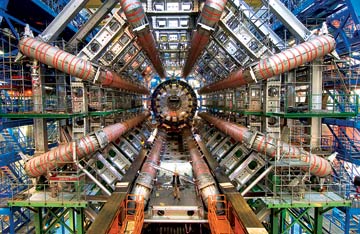
WHAT A BLAST: CERN's Large Hadron Collider
The world-class slopes, the pristine scenery, the distant sound of cowbells — there are countless reasons to go to the Swiss mountains. Now there's a good reason to go underneath them, too. Just outside Geneva, physicists at the European Organization for Nuclear Research — known as CERN — are putting the finishing touches on the largest particle accelerator ever constructed.
When it is switched on later this year, the Large Hadron Collider (LHC) will send proton particles traveling in opposite directions around a 17-mile (27-km) underground ring at nearly the speed of light, making 11,245 circuits a second. At four points in the ring, some of the protons will collide, resulting in explosions similar to the Big Bang. By studying the debris, scientists hope to find clues to the universe's fundamental mysteries: Why is there mass? What is dark matter? Why is the universe expanding at a confounding rate?
For anyone wondering the same things, CERN offers free tours run by physicists. They include a visit to one of the LHC's four detectors, the mammoth apparatuses used to measure the fallout from the collisions — some of it in particles so small and fleeting they can only be confirmed by a stream of decay as they disappear. Discussing the experiment with a charming mix of transparency and esotericism, the tour guides remind visitors how little we actually understand about the universe. A day at CERN might not yield all the answers, but it makes asking the questions so much more fun. https://outreach.web.cern.ch